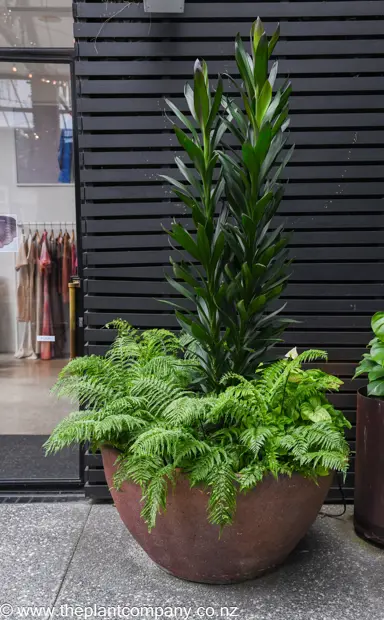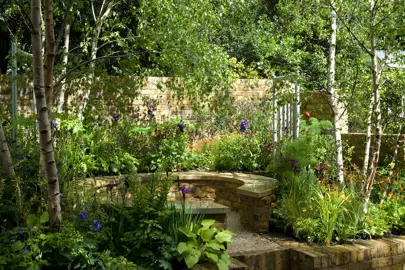
The Plant Company grows, sells, and ships Robinia trees throughout NZ. We pride ourselves on producing high quality plants and seeing the joy from our customers when they receive them. We do hope you enjoy them and support this NZ business that is passionate about Robinia trees.
Robinia Frisia, commonly known as the Golden Robinia, features fern-like foliage that emerges light yellow-green in spring, ages to become...
Robinia pseudoacacia Umbraculifera is a small, deciduous tree that grows as a dense ball of soft-looking, very aesthetic foliage. The leaves emerge a...
Robinia 'Bellas Gold', also known as Black Locust tree, is a striking ornamental tree valued for its golden yellow foliage that provides year round...
Robinia Casque Rouge, commonly known as the Black Locust tree, features fern-like foliage that emerges light green in spring, ages to dark green...
Robinia Lace Lady, commonly known as the False Acacia tree, is a deciduous tree grown for its lace-like foliage and pendulous form. The showy foliage...
Robinia Mop Top is a small, deciduous tree grown for its impressive foliage and tidy form. This tree grows as a dense ball of soft-looking, very...
Robinia Tropical Splash, commonly known as Honey Locust, is a deciduous tree grown for its colourful foliage and lovely form. The fern-like foliage...
Growing colourful trees in your garden delivers a vast range of benefits:
We have the largest variety of Robinia, and we have the right one for your space. Our trees have been selected to thrive in NZ’s climate. We grow and stock only the highest quality plants, sourcing them locally, and from NZ’s leading nurseries. Each plant is packed and transported with extreme care, ensuring it arrives to you in the same condition it was in when it left the nursery. If you are wanting to buy Robinia, shop with confidence from the best in the industry.
1. Is Robinia the same as Acacia?
Robinia and Acacia are not the same. They are both trees in the legume family, Fabaceae, but they belong to different subfamilies. Robinia is in the subfamily Faboideae, while Acacia is in the subfamily Mimosoideae. This means that they have some similarities, such as their leaves and thorns, but they also have some important differences.
Robinia trees are native to North America, but they have been introduced to Europe and other parts of the world. They are typically taller than Acacia trees, with some species growing up to 30 meters (100 feet) tall. Robinia trees have pinnate leaves, which means that the leaves are arranged in pairs along a central stalk. The leaves are also compound, meaning that they are made up of many smaller leaflets. Robinia trees have thorns, which are modified branches that help to protect the tree from predators.
Acacia trees are native to Africa, Australia, and South America. They are typically shorter than Robinia trees, with most species growing between 5 and 15 meters (16 and 49 feet) tall. Acacia trees have bipinnate leaves, which means that the leaves are arranged in pairs along a central stalk, and each pair of leaflets is further divided into pairs. Acacia trees have thorns, but they are typically smaller and less noticeable than the thorns on Robinia trees.
The main difference between Robinia and Acacia trees is the shape of their flowers. Robinia trees have white, pea-like flowers that are arranged in racemes (clusters). Acacia trees have yellow or white flowers that are arranged in clusters or spikes.
2. What is Robinia good for?
Robinia, also known as black locust, is a tree that has a wide range of uses:
In addition to these specific uses, Robinia trees also provide a number of ecological benefits. They help to improve air quality by absorbing carbon dioxide and releasing oxygen. They also provide habitat for a variety of wildlife species, including birds, bats, and insects.
3. What is the other name for Robinia?
Robinia has several common names, including:
4. Why does Robinia lose leaves?
Robinia trees lose their leaves in the fall as a way to conserve energy and protect themselves from the harsh winter conditions. During autumn, the trees begin to produce less chlorophyll and other pigments, such as carotenes and anthocyanins, become more visible, giving the leaves their yellow, orange, and red colors.As well as producing less chlorophyll, Robinia trees also begin to form a layer of cork cells at the base of their leaf stalks. These cork cells help to seal off the leaf stalks and prevent the loss of water and nutrients. Once the cork cells have formed, the tree releases a hormone that causes the leaf stalks to detach from the branches.
The loss of leaves is a natural process that helps Robinia trees to survive the winter. By conserving energy and protecting themselves from the cold, Robinia trees are able to enter a state of dormancy and wait for the spring when they can begin to grow new leaves and produce food again.
5. What is the lifespan of a Robinia tree?
Robinia trees have an average lifespan of 80 to 100 years. However, some trees have been known to live for over 200 years old. The lifespan of a Robinia tree depends on the growing conditions, genetic factors, and how well they are cared for.
6. What are the characteristics of Robinia?
Robinia, also known as black locust, is a deciduous tree native to North America. It is a member of the pea family, Fabaceae, and is closely related to the genus Gleditsia, which includes the honey locust. Robinia trees are fast-growing and can reach heights of up to 80 feet (24 meters) tall. They have a wide range of uses, including timber production, landscaping, erosion control, and honey production.
7. Is Robinia an evergreen?
Robinia trees are not evergreen. They are deciduous trees, which means that they lose their leaves in the autumn and grow new leaves in the spring. This adaptation helps trees to conserve energy and water during the winter months when conditions are harsh.
8. When can I cut back Robinia?
The best time to cut back Robinia is in the late winter or early spring, before the tree starts to bud. This is because the tree is dormant during this time, so it will be less stressed by the pruning. Pruning in the late winter or early spring will also give the tree time to heal and recover before the start of the growing season.
Whether you need assistance finding the plant you’re looking for or you simply want to know more about who we are and what we do, we invite you to get in touch with us today. A member of The Plant Company team will get back in touch as soon as possible.


